What is Our Palette?
We don’t follow traditional school subjects or strict curricula. Instead, our activities stem from the curiosity and interests of my sons. I take the many questions of childhood seriously: the endless why’s, where’s, what’s, who’s and how’s fuel our adventures. The children are, after all, the pilots, i.e. the ones in charge of their learning.
Despite the lack of a strict curriculum, we do have a structure, which we call our “palette.” Each color in our palette often integrates two or more traditional subject areas.
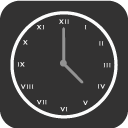
Black is To Look Back
There is a lot to learn from the achievements and failures of those who came before us. As Sir Isaac Newton said, If I have seen further, it is by standing on the shoulders of giants. The BLACK in our palette is our conscious effort to look back and reflect on people and events that contributed to the world as we currently know it.
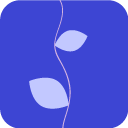
Blue is To Grow
The BLUE in our palette is probably best summed up with this one word: character. It’s working hard, trying, trying again, being nice, playing fair, winning gracefully, handling failure, seeking courage, dreaming big, believing, finding wonder… It’s grit, i.e. strength of character, the really important stuff.
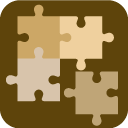
Brown is To Solve
The BROWN in our palette is a quest to find answers, explanations, or solutions, and the skills needed to help us out. These are puzzles, mazes, riddles, sequences, patterns, math and logic, to name a few. BROWN is anything that makes us scratch our heads and then later shout “I got it!” when we’re done.

Green is To Communicate
The GREEN in our palette is communicating: reading, speaking, writing, listening, sharing, and even communicating in non-verbal forms. We begin by deciphering those tricky language symbols more popularly known as the alphabet, and move on to many other important aspects of communication, including body language, tone, and respect, just to name a few.

Orange is To Move and Be Moved
ORANGE is inspired by various child development studies stating that—and I loosely paraphrase—movement, music and learning go together like cats and the Internet. Jumping. Hopping. Twisting. If it involves motor skills, it’s an orange. If it moves us to dance, like a good beat or a thumping rhythm, it’s orange. If moves us to tears, like a heartfelt rendition of Leonard Cohen’s Hallelujah, it’s orange, too.
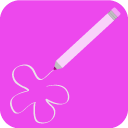
Pink is To Draw
The PINK in our palette is the act of making marks on paper. All kids can draw. More importantly, they believe they can draw, and they enjoy it. For various reasons, a lot of grown-ups have lost their belief in their abilities, and their enthusiasm over this simple act of creating, thinking and feeling has waned. Drawing is more than an artistic act. It helps our brains and well-being in ways that only drawing can. So here’s PINK in an attempt to keep the faith alive.
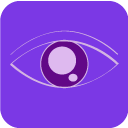
Purple is To Sense and Make Sense
In the PURPLE in our palette, we use our senses to investigate and make sense of our world, as well as things beyond our world. Curiosity. Experimentation. Questioning. Discovery. These are our big purple words. And if I’m to be completely honest, this one does fall under a traditional school subject area. It’s called Science.

Red is To Create
The RED in our palette brings out the makers in us. To create is to make something exist, not just in our heads but in some form that one or more of our senses can appreciate. In RED we turn ideas to reality, express our creativity, engineer, prototype, build. We think with our hands.

White is To Find/ Seek Inspiration
Although supposedly only 1% of genius (the other 99% being perspiration), our palette, represented by WHITE, includes inspiration. We seek inspiration from great masters in various fields, from amazing stories from our history, from beauty—natural and man-made, earth-bound and beyond, from everyday heroes.

Yellow is To Imagine
In YELLOW, everything is possible. We imagine worlds through play and stories. We come up with ideas—impossible and improbable ones—about anything, from how mustard should be made, to various ways to reform and, if necessary, destroy evil monsters. In short, yellow is magic. Just like childhood.
But what exactly do we do each day?
We play
Play is a huge part of our life. Our play includes games (e.g. board games, card games, sports, even the occasional video games), fantasy play (e.g. role play, action figures), construction play (e.g. Legos, robots, snap circuits, K’nex), independent/ solitary play, free play (anything goes!), large (e.g. playground, gym) and small motor (e.g. beads), art play, etc. I guess you can call most of what we do ‘play’ simply because we are usually having fun!
We question and seek answers
Like many (maybe all) kids, G is constantly asking questions. Some are easy enough to answer (How are mummies made?) while some are a bit trickier (Why is life life?) In these activities, I attempt to answer his questions in the most interesting way I can.
We take on projects
Projects start with a goal and usually ends with a tangible object. In these activities, we build with paper, straws, toothpicks, marshmallows, balsa wood, and various other materials. These activities are designed to satisfy our inner makers.
We go on adventures
The world is big, and it needs to be explored! For now, “the world” is mostly Chicago, with occasional road trips and flights to other states. But we can always hope that the world truly becomes part of our classroom!
We experiment
This is closely tied to questioning. Sometimes the best way to answer a question is to come to the conclusion yourself.
We make and utilize tools
Although there are various learning tools available for purchase, these tools are either too expensive, or are just not quite right for what we need. Since I love designing and making stuff, I use this opportunity to make our own learning tools, which end up being highly customized to fit our needs.
